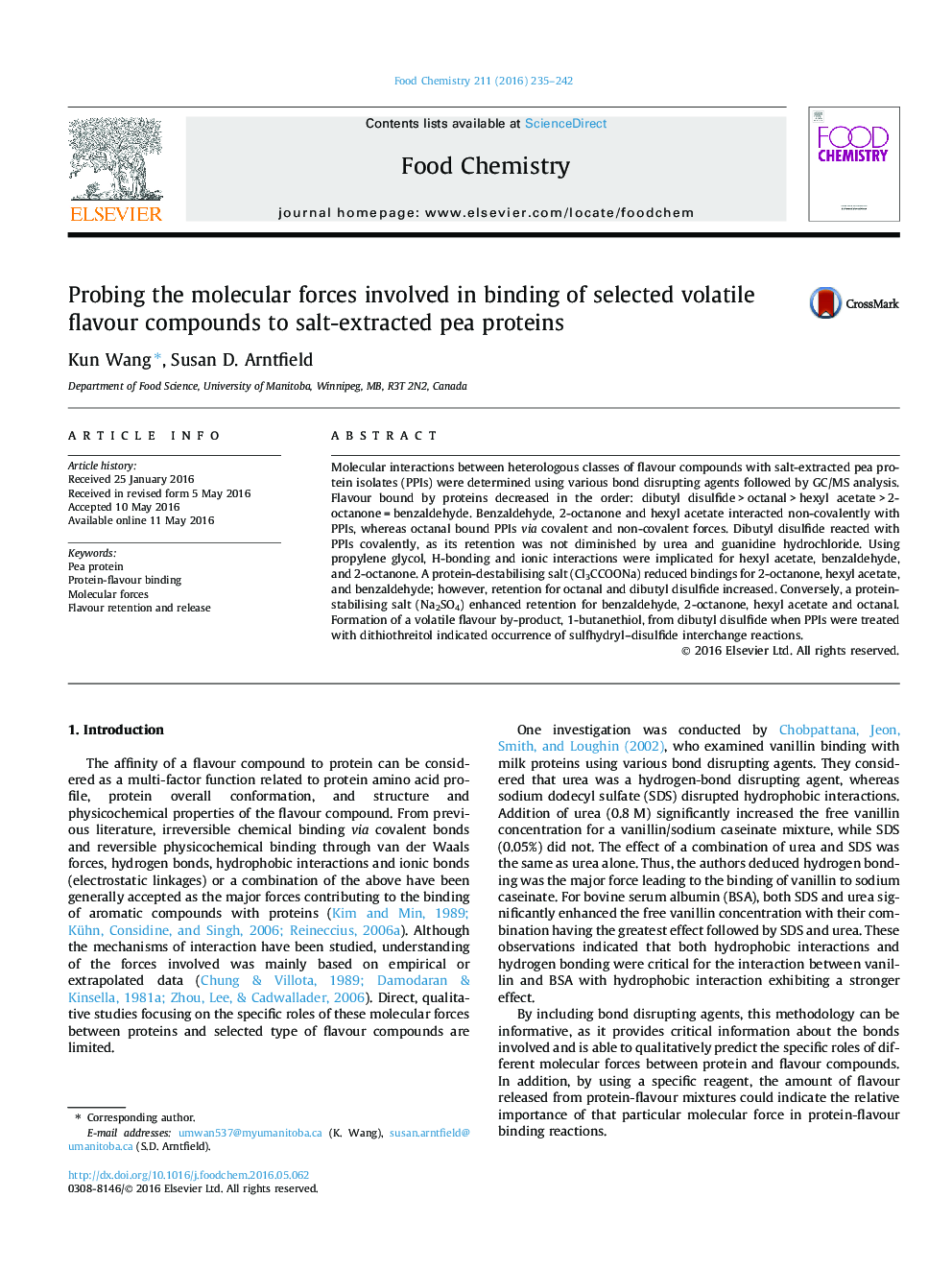| Article ID | Journal | Published Year | Pages | File Type |
|---|---|---|---|---|
| 7587972 | Food Chemistry | 2016 | 8 Pages |
Abstract
Molecular interactions between heterologous classes of flavour compounds with salt-extracted pea protein isolates (PPIs) were determined using various bond disrupting agents followed by GC/MS analysis. Flavour bound by proteins decreased in the order: dibutyl disulfide > octanal > hexyl acetate > 2-octanone = benzaldehyde. Benzaldehyde, 2-octanone and hexyl acetate interacted non-covalently with PPIs, whereas octanal bound PPIs via covalent and non-covalent forces. Dibutyl disulfide reacted with PPIs covalently, as its retention was not diminished by urea and guanidine hydrochloride. Using propylene glycol, H-bonding and ionic interactions were implicated for hexyl acetate, benzaldehyde, and 2-octanone. A protein-destabilising salt (Cl3CCOONa) reduced bindings for 2-octanone, hexyl acetate, and benzaldehyde; however, retention for octanal and dibutyl disulfide increased. Conversely, a protein-stabilising salt (Na2SO4) enhanced retention for benzaldehyde, 2-octanone, hexyl acetate and octanal. Formation of a volatile flavour by-product, 1-butanethiol, from dibutyl disulfide when PPIs were treated with dithiothreitol indicated occurrence of sulfhydryl-disulfide interchange reactions.
Keywords
Related Topics
Physical Sciences and Engineering
Chemistry
Analytical Chemistry
Authors
Kun Wang, Susan D. Arntfield,
